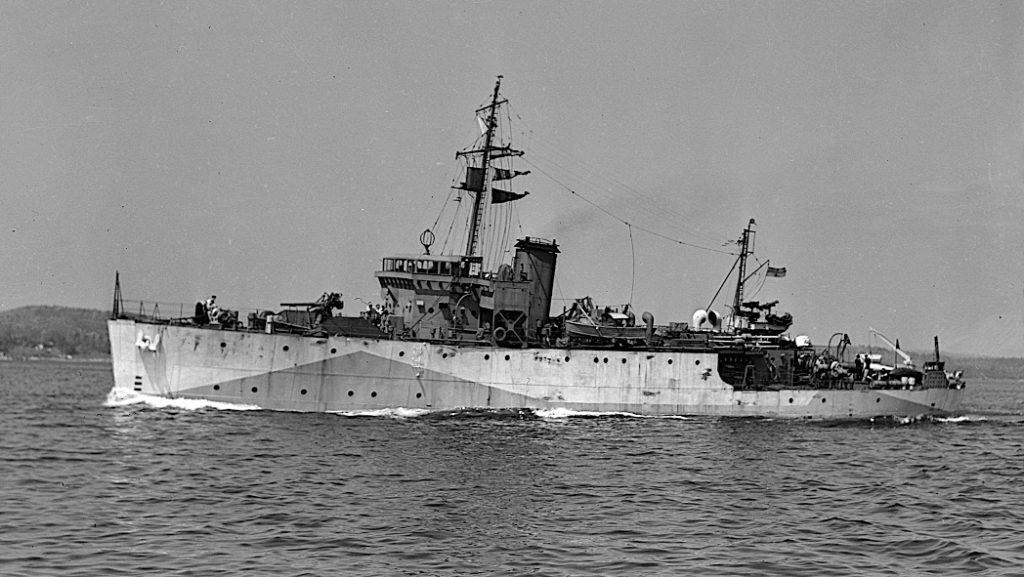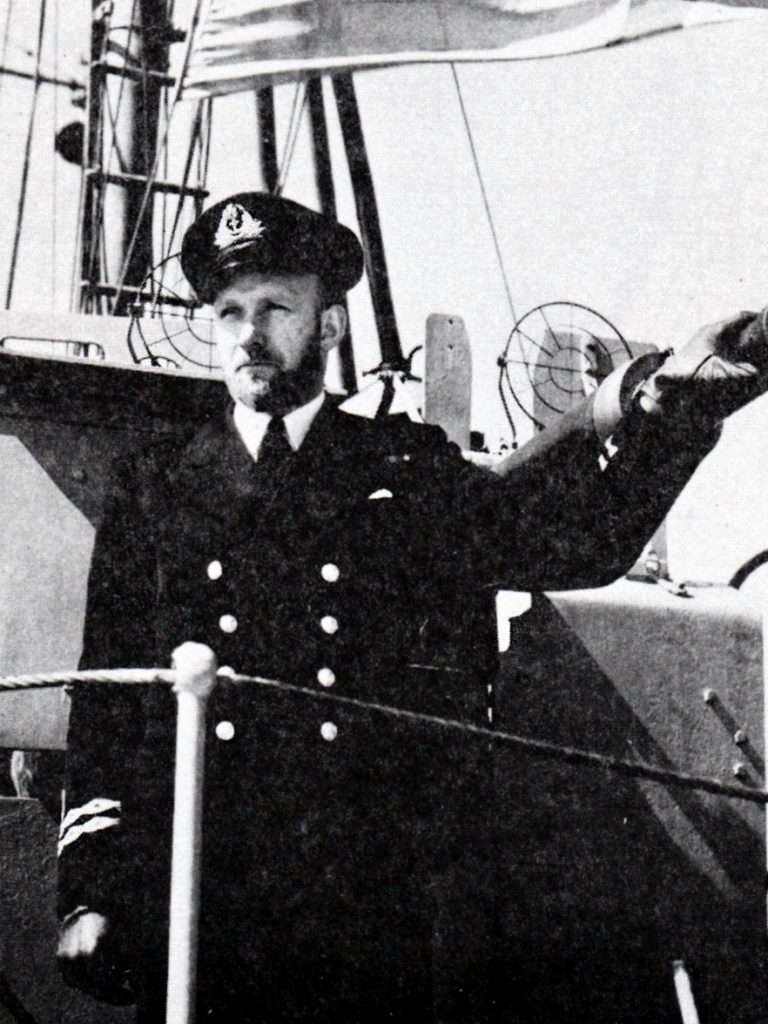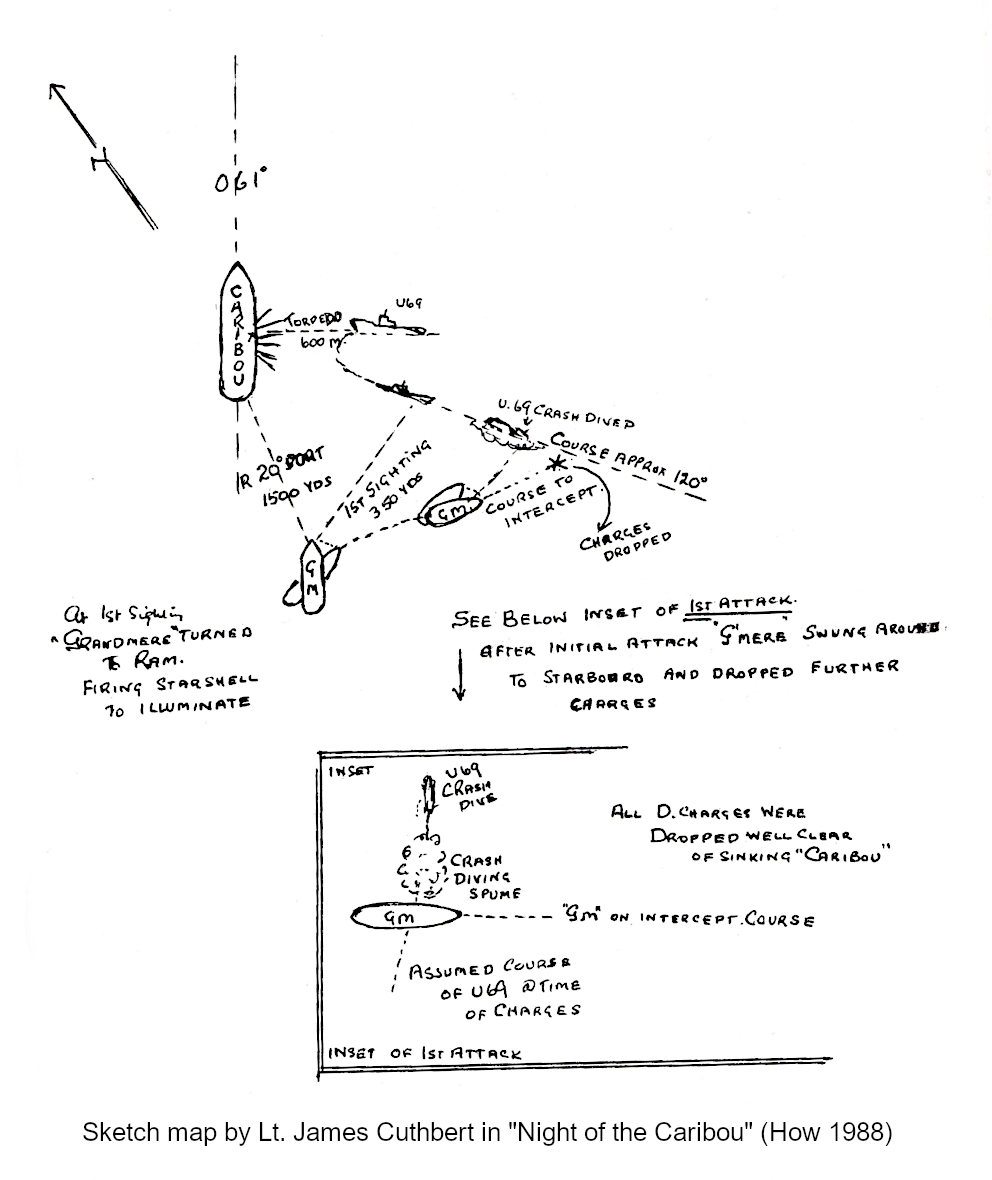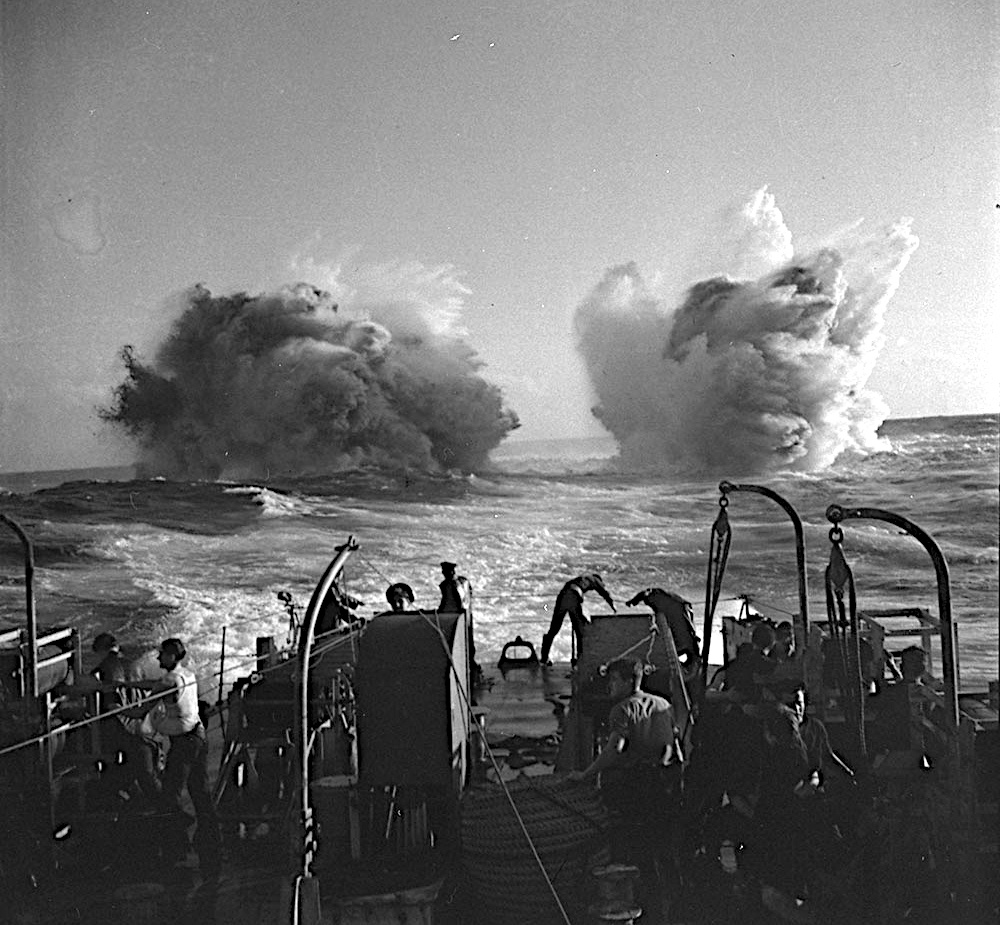Where was the Navy escort ship?
From the navigating bridge of S.S. Caribou, Captain Ben Taverner could not see his naval escort.
H.M.C.S. Grandmere obeyed the standing order requiring a single escort to follow its assigned merchant vessel. But following S.S. Caribou rendered the minesweeper’s Asdic (sonar) almost useless. Plus the hydrophone operator could only hear the ferry’s engine and propeller—not that of any approaching enemy. When Lieutenant James Cuthbert asked to deviate from the standing order, his superiors refused. Furthermore, Cuthbert reported the next day S.S. Caribou was visible for 2500 yards: “Smoke discipline was extremely bad.”
Officer on watch, Lieutenant Donald Hewat saw the flash on Caribou’s starboard side. Alerting Cuthbert, Hewat sounded action stations. Cuthbert yelled to swing to starboard, and for full speed. Grandmere would have rammed U-69, but the submarine dove deep.
Cuthbert dropped a diamond-shaped pattern of six depth charges on the submarine’s wake. The commander hoped to score a direct hit. Instead H.M.C.S. Grandmere harried U-69 over two hours with six more depth charges, keeping the U-boat submerged. At dawn, with the chances of a second attack reduced but still possible, Cuthbert commenced rescue operations.
It was the worst night of his life, but he remained proud of his crew. Swimmers like Ad Stady, dived into the cold Atlantic “without a second’s delay”. Others lowered Grandmere’s seaboat or climbed the scramble net with hypothermic survivors.
“I should have gone on looking for the submarine,” Cuthbert reflected later, “but I couldn’t. Not with women and children out there somewhere.”





